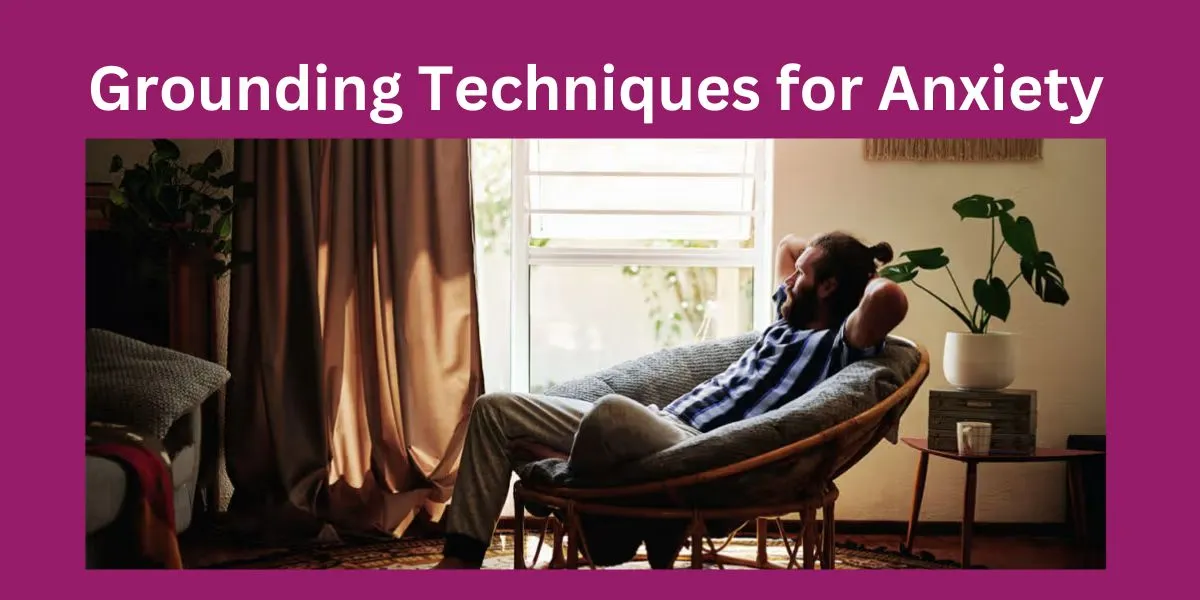Ever feel like your mind is spinning faster than a hamster wheel? Anxiety can make you feel like you’re losing grip on reality. Grounding techniques are your mental “reset” button, bringing you back to the present and helping you regain control. Ready to find out how you can calm the storm within? Let’s dive in!
What Are Grounding Techniques?
Grounding techniques are simple strategies designed to anchor you in the present moment. They can be physical, mental, or emotional methods that help break the cycle of anxious thoughts.
Why Grounding Techniques Are Effective
Think of anxiety like a snowball rolling downhill—it gathers momentum and size quickly. Grounding techniques act like a brake, stopping that snowball before it turns into an avalanche.
Who Can Benefit from Grounding Techniques?
Anyone feeling overwhelmed by anxiety can benefit, whether it’s due to stress, PTSD, or everyday worries. These techniques are easy to learn and can be practiced anywhere.
Physical Grounding Techniques
5-4-3-2-1 Technique
What It Is
This method involves engaging your senses to focus on the present.
How to Do It
- 5 Things You Can See: Look around and name five things.
- 4 Things You Can Touch: Feel four different textures.
- 3 Things You Can Hear: Identify three distinct sounds.
- 2 Things You Can Smell: Focus on two smells around you.
- 1 Thing You Can Taste: Notice the taste in your mouth or take a sip of water.
Deep Breathing
What It Is
Deep breathing helps slow your heart rate and reduce tension.
How to Do It
- Inhale deeply through your nose for four counts.
- Hold the breath for seven counts.
- Exhale slowly through your mouth for eight counts.
Progressive Muscle Relaxation
What It Is
This technique involves tensing and then relaxing different muscle groups.
How to Do It
Start from your toes and work your way up to your head, tensing each muscle group for 5 seconds and then slowly releasing.
Mental Grounding Techniques
Mental Scanning
What It Is
Shift your focus from your anxious thoughts to scanning your body and surroundings.
How to Do It
Mentally scan your body from head to toe, noting any sensations or feelings without judgment.
Counting Backwards
What It Is
A simple, distraction-based technique.
How to Do It
Count backward from 100 by threes or sevens. The mental effort required helps divert your mind from anxiety.
Emotional Grounding Techniques
Affirmations and Mantras
What They Are
Short, positive statements you repeat to yourself to foster calmness.
How to Use Them
Examples include:
- “This feeling is temporary.”
- “I am in control.”
- “I am safe.”
Journaling
What It Is
Writing down your thoughts can help you process and release them.
How to Do It
Grab a notebook and jot down what’s bothering you. Sometimes, seeing your thoughts on paper can make them feel less overwhelming.
Sensory Grounding Techniques
Holding an Object
What It Is
Focusing on an object can ground you.
How to Do It
Pick up something small, like a smooth stone or a stress ball, and focus on its texture, weight, and temperature.
Temperature Change
What It Is
A sudden change in temperature can bring you back to the present.
How to Do It
Splash cold water on your face, hold an ice cube, or have a warm drink.
Combining Techniques
Why Use Multiple Techniques?
Different situations call for different strategies. Combining techniques can enhance their effectiveness. For example, deep breathing paired with a mantra can provide both physical and emotional relief.
Tailoring Techniques to Your Needs
Everyone’s anxiety is different. Experiment with various techniques to discover what works best for you. Keep a journal to track which methods provide the most relief.
Practical Tips for Grounding Techniques
Practice Makes Perfect
Grounding techniques are most effective when practiced regularly. Think of them as exercises for your mind—consistent practice strengthens your ability to manage anxiety.
Set a Routine
Incorporate grounding techniques into your daily routine. This helps make them a habit, so they’re easier to access during moments of high anxiety.
Keep Tools Handy
Whether it’s a stress ball, a journal, or a list of affirmations, keep grounding tools easily accessible. Having them nearby makes it simpler to use these techniques when you need them most.
When to Use Grounding Techniques
During an Anxiety Attack
Grounding techniques can be lifesavers during an anxiety attack. They help you regain control when everything feels overwhelming.
Before Stressful Events
Use grounding techniques proactively before stressful situations, like public speaking or a job interview, to keep anxiety at bay.
As Part of Daily Life
Even on calm days, grounding techniques can enhance your overall sense of well-being. They serve as a preventive measure, keeping anxiety from sneaking up on you.
Conclusion: Take Control of Your Anxiety
Grounding techniques are powerful tools to manage anxiety and bring you back to the present moment. By practicing these methods, you can build resilience and take control of your mental well-being. Remember, it’s not about eliminating anxiety altogether but learning how to navigate through it with confidence and calm.
FAQs
What are grounding techniques?
Grounding techniques are strategies that help you stay connected to the present moment, reducing feelings of anxiety or panic.
How quickly do grounding techniques work?
The effectiveness can vary, but many people feel relief within a few minutes of practicing these techniques.
Can grounding techniques replace therapy?
While grounding techniques are helpful, they’re not a substitute for professional therapy. They work best when used alongside other treatments.
Are grounding techniques suitable for children?
Yes, many grounding techniques can be adapted for children. Simple methods like deep breathing or the 5-4-3-2-1 technique can be very effective for kids.
Can grounding techniques be used in public?
Absolutely! Many techniques, like deep breathing or mental scanning, are discreet and can be practiced in public settings without drawing attention.










